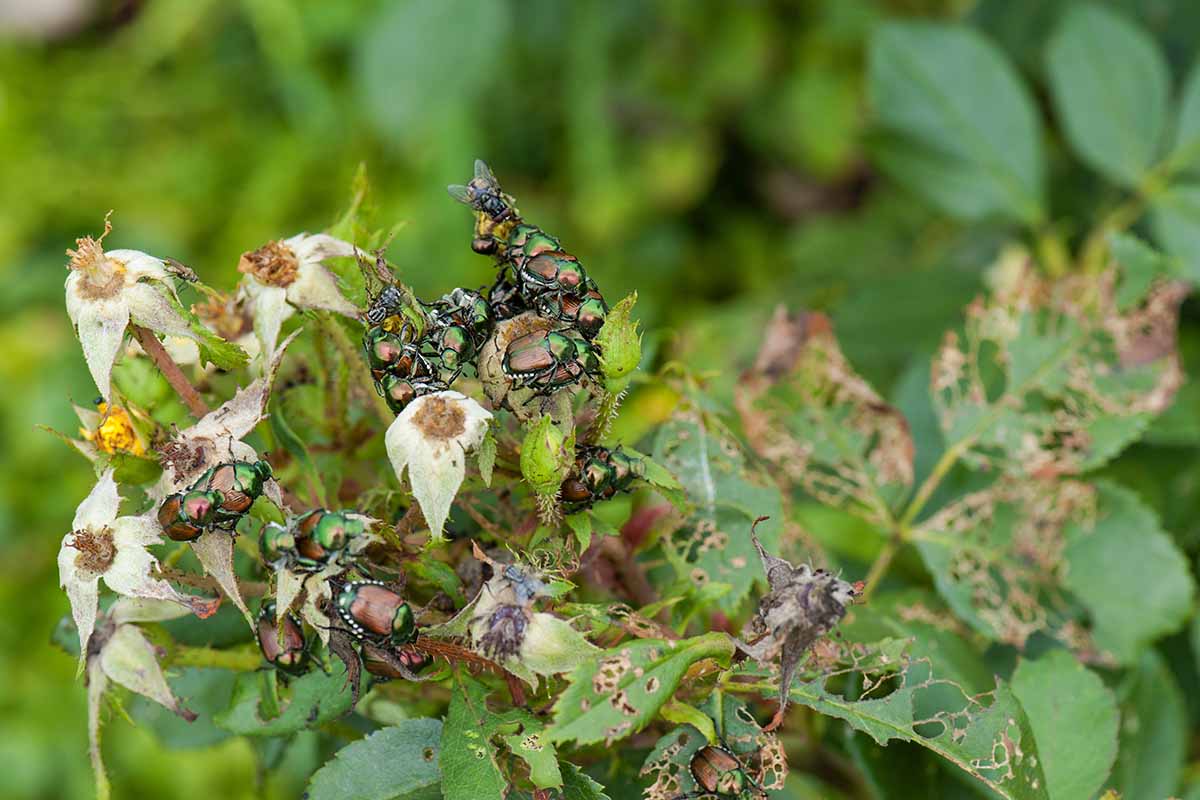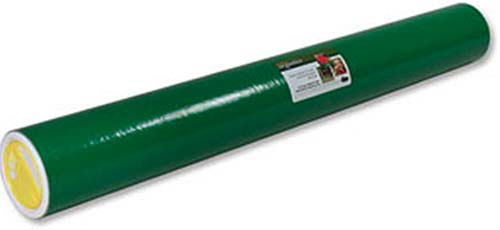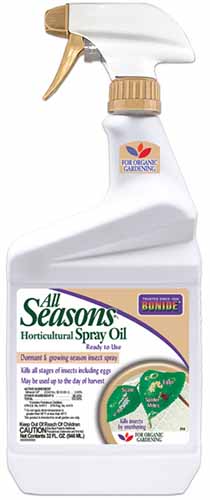
Popillia japonica
It just isn’t summer in the northeast without Japanese beetles (Popillia japonica) tearing through raspberries, roses, and a variety of other plants gardeners hold near and dear.
Aside from their voracious appetite, these pests are extremely difficult to exterminate or repel.
They’re a problem for home gardeners and commercial growers alike, and their constant westward expansion means the Japanese beetle won’t be just a midwestern and eastern problem for long.

We link to vendors to help you find relevant products. If you buy from one of our links, we may earn a commission.
When it comes to pest problems, a little knowledge goes a long way. After all, let us not forget the immortal wisdom of G.I. Joe who said, “Knowing is half the battle.”
This applies quite well to Japanese beetles. There are no guaranteed ways to eliminate these insects from your garden, but you can take steps to minimize their presence and regain some control when the beetles show their coppery butts on your rose buds.
In this guide, we’ll take a brief look at where Japanese beetles originated in the United States, gain an understanding of their life cycle, and go over how to prevent and manage these pests in your garden.
Strap yourself in because we’re goin’ to beetle town. First stop: Riverton, New Jersey.
What Are Japanese Beetles?
Japanese beetles are a species of scarab beetle (from the Scarabaeidae family) indigenous to Japan that spread to North America and Europe, where they are considered pests.
These beetles made their first known appearance in the United States in 1916, in Riverton, New Jersey. However, unlike the Beatles who gave us songs like “Mother Nature’s Son” and “Yesterday,” these beetles were an unwelcome addition to the area.

It’s widely accepted that they arrived in the United States in the early 20th century hiding inside a shipment of Japanese irises. A few years under the radar is all it took for the pests to establish a breeding population.
Authorities attempted to control and eradicate these pests, but by 1920, the efforts and associated programs were abandoned.
Agreeable weather, no natural predators, and a limitless supply of well-irrigated turf provided a haven for these invaders.
The combination of these three factors explains how they’ve established such a firm foothold in the US, and why they cost half a billion dollars a year in prevention and management programs.
These pests exist everywhere east of the Rocky Mountains, though small populations have been found in numerous western states in recent years.

All states west of the Rockies regularly monitor airports for the beetles and have found them repeatedly, meaning Japanese beetles are on the move and looking for new territory.
At the same time, we know what a pain in the butt these critters can be, so state and local governments are working super hard to keep them at bay.
In spite of those measures, breeding populations have established themselves in south-central Washington and in Caldwell, Idaho.
Utah is currently implementing an eradication program for the multiple breeding populations in the state, and Nevada has successfully eradicated breeding populations there.
California, with its thriving agricultural sector, has repeatedly done battle with these beetles and has managed to control infestations in some areas, though efforts are ongoing.
Wyoming, Montana, Arizona, and New Mexico have managed to remain free of the presence of Japanese beetles at the time of writing.
By the way, if you live in a western state and you see a Japanese beetle, be sure to report it to your local agricultural agency immediately. They will have an online form to fill out or an email address where you can send details of the sighting.
Each individual beetle does a relatively minor amount of damage, but when one eats, others will inevitably be drawn to the pheromones it releases. It is in these mass quantities that the real damage is done.
The adult phase of the life cycle lasts for about 30 to 50 days. That’s why you often notice a massive swarm of the critters where there were none only a few days earlier.
They need to eat, reproduce, eat, and reproduce again, as many times as possible, in that brief window.
The females will fly to an area of turf grass and lay clusters of eggs a few inches under the soil. They can repeat this process every 24 hours. After 10 to 14 days, the eggs hatch and the next life cycle begins.
Identification
Admittedly attractive insects, Japanese beetles reach a length of up to half an inch long and a bit less in width, and can easily fit on the top of a penny.

They have a coppery-bronze set of wings, a brilliant emerald green head, and a nice smattering of white spots and black accents to round out their color palette.
They almost look like little flying jewels. Too bad they’re such a menace.
The grubs are inch-long white or gray worm-like critters with brown heads. When disturbed or resting, they tend to adopt a curled position.
Biology and Life Cycle
For a creature that spends the vast majority of its life underground, these pests cause a tremendous amount of damage. That’s because every stage of their life curses them with bottomless hunger.
Let’s start by looking at the most commonly sighted phase of their life cycle: the adult beetle.

We often spot these guys on some of our favorite summertime plants, like roses and raspberries.
It’s uncommon to spot a single beetle because adults emit an attractant pheromone when they’re eating. When others of their ilk catch wind of it, they flock to the source and proceed to join the feast.
Each individual beetle doesn’t consume a huge amount of vegetation. It is when groups of them start to pile up on those delicate rosebuds and delicious raspberries that the real damage is done.
The beetles will eat only the leafy green bits, leaving the the foliage skeletonized.
You probably won’t see the eggs, but after hatching the larvae, known as grubs, tunnel through the soil, feeding on plant roots.
The grubs will tear apart the roots of your lawn and leave vast swaths of brown and dead turf to repair.

You know those big dead patches in your lawn, the ones where the grass is browning out?
If you live on the Eastern Seaboard and you were to cut a square-foot section in the turf and roll it back like a carpet, chances are you’d find an assortment of grubs in the top few inches of the soil. And a sizable number of these are the larvae of the Japanese beetle.
The grub life cycle lasts for about ten months. They thrive in well-watered terrain but will dig themselves deeper into the soil during times of drought.
During the winter months, the grubs will typically dig themselves deeper into the soil to wait out the cold.
They’ve been observed as far as a foot deep in the soil during cold spells. They don’t do much damage throughout this brief stage.
When the weather warms up in spring, these babies will perk right up and burrow their way to the roots of your lawn, munching away.
They cause no small amount of damage to turf at this point, as they prepare themselves for their transformation to adulthood, which happens after about four to six weeks.
They’ll emerge from the soil as adults and start the life cycle all over again.
Read our guide to lawn grub identification and control.
In most areas, the life cycle takes a year, but in areas with a short warm season, it can take two years.
Organic Control Methods
Once upon a time, we all turned to harsh chemicals to address our pest and disease problems.
Over the years, gardeners have learned that these chemicals tend to do more harm than good in the long run. For that reason, I strongly suggest you try organic methods before resorting to chemical control.
For the home gardener, organic methods are more than adequate for controlling an infestation.
You won’t be able to eliminate every single Japanese beetle if you live east of the Rockies, but that doesn’t mean you need to say goodbye to your favorite plants.
Let’s start with some of the gardening techniques that will help minimize the problem.
Cultural
I’ve got some in-laws I don’t care for (who doesn’t?). They’ve got bland taste buds; boiled potatoes and cabbage with a sprinkle of pepper is the limit for what they will tolerate in the vegetable department.
So, my trick for minimizing their dinner visits is to deploy my favorite Central American recipes and cook up a spicy meal so hot it’ll make their heads spin.

I kid, I kid. Hopefully that got a bit of a groan or maybe even a chuckle out of you. But the premise is solid for how to minimize damage from Japanese beetles: don’t plant what they want to eat.
There we go! Problem solved, right? Wrong! The situation with these guys is that they have an incredibly diverse selection of plants they want to eat.
Seriously, it’s a list of over two hundred different species, and most of the items on their menu are our favorite and most valued plantings.
I’ve compiled a generalized list of plants Japanese beetles prefer paired with an offering of plants they tend to stay away from.
In my experience, I’ve seen the most damage done to roses, cane berries, and fruit-producing trees than anything else in my garden.
So, some of our favorite and most useful plants are also highly favored by Japanese beetles – sounds like they’ve got good taste. But what can we do to limit their damage, short of altering the entire landscape?
Fortunately, there are a few easy, low-impact methods we can employ to protect our gardens.
First, interplant preferred species with safe species to help reduce the buildup of populations.
A mass of roses, raspberries, Japanese maples, grapevines, and an apricot tree is more likely to harbor a huge population of Japanese beetles than some roses flanked by hollies, and a grapevine growing near a juniper shrub.
When you select new plants for your garden, consider the balance of preferred species and safe species. If you already grow lots that are on the dinner menu list, maybe add a few safe ones next.
In addition to utilizing plants that are generally avoided by the bugs, we can help to make our lawns unappealing and inhospitable during the grub stage of their life cycle.

Female beetles are drawn to well-irrigated turf to deposit their eggs, and the grubs happily chew up the roots of our nice, green lawns.
As touched upon earlier, America’s obsession with a vibrantly green and thick lawn has provided the perfect nursery for these invasive pests.
One of the most effective methods for limiting future generations of the pest is to limit how often you water your lawn.
This is also advantageous in other ways. Many areas in the west are promoting the idea of letting lawns go brown in the summer in an effort to minimize water use in drought-stricken regions.
By allowing our lawns to go dry we are minimizing our water usage, as well as making the landscape far less attractive to Japanese beetles.
For those homeowners who don’t want to let their lawn go dry, consider letting it go high instead!
Mike McGrath of the You Bet Your Garden radio show suggests that allowing your lawn to remain at a height of about three inches, coupled with no watering during dry spells can prevent the female beetles from laying eggs in the soil.
Take care and be aware that there’s a difference between letting your yard go dead, and minimizing your water use. We have an excellent article about xeriscaping that explains this process very well.
Alternatively, consider tearing out your lawn and replacing it with ground cover or landscaping that favors plant species that Japanese beetles ignore.
A combination of low-growing junipers, euonymus, dusty miller, California poppy, impatiens, holly, pansies, and sedum could make a pretty and pest-resistant display. If you want to stick with a lawn-like plant, thyme is a smart option.
Without a good spot to pupate and feed, you’ll reduce the number of Japanese beetles in the area. They’ll head to your neighbor’s yard, instead.
Physical
The most effective method of taking care of an infestation is to mix up a batch of two tablespoons of dish soap to one gallon of water.
In the morning, while the insects are still languid and relatively inactive, manually pick them up and drop them into the water. The dish soap makes it hard for them to swim and stay above water so they drown.

If you don’t want to touch them, you can tap the leaves of the plants they’re hanging out on and watch them drop into the water instead.
This can be a time-consuming practice but it yields the best results. You can go ahead and skip your morning meditation in exchange for mindfully murdering this menace.
The pheromone traps available for sale tend to do more harm than good, as they attract the beetles to a new area.
On top of that, the chemicals used in these traps tend to be indiscriminate in their range of damage, doing harm to beneficial pollinators like honeybees and the friendly aphid-destroying ladybug as well as the target insect.
Retailers sell targeted Japanese beetle traps designed to attract the bugs and catch them in a nice bag.
But as we now know, the beetles are attracted to the pheromone inside of this trap and will quickly swarm to the source point, but not necessarily the trap itself. Add to this a range of about one mile traveled per beetle and you’ve got a recipe for an infestation.
If you insist on trying them out, the only place to use these traps is in rural areas, and only when you can place them about a quarter mile away from your garden.
Biological
Consider that a few common backyard species will feed on the beetles, including European starlings, spiders, and assassin bugs.
Their presence doesn’t seem to typically do enough to significantly help the problem, but they have been observed eating the beetles. Encouraging these natural predators certainly can’t hurt.
My uncle has chickens, and he tells me that he lets them run wild through the raspberries. They absolutely love eating the Japanese beetles. Must be a chicken delicacy.

Ever see a skunk nosing its way through your yard? It might be making a mess, but it’s also eating up those nasty grubs. Sometimes it’s worthwhile to take a small hit on your turf in exchange for a reduced beetle population.
Moles are similarly inclined to devour grubs but will also leave telltale trails around your yard.
Fortunately, the moles don’t bother plants as they are are single-mindedly hunting for grubs and the like. If you allow the moles to eat their fill of grubs until it’s no longer a problem, you can then easily reduce their numbers in your lawn.
Another great option for taking care of Japanese beetles – and an assortment of other pests like sawfly caterpillars and grasshoppers – is to introduce parasitic flies or wasps.
The spring tiphia (Tiphia vernalis) is a Chinese native wasp introduced to the United States specifically to combat Japanese beetles.
The wasp will hunt down the grubs and lay its eggs on the surface of their bodies. The wasp eggs hatch and the larvae eat the grubs from the inside out.
Tachinid flies have a similar habit, except that they lay their eggs on adult Japanese beetles instead. There are a variety of other methods by which these flies deposit their eggs, but the important part is that they kill these pests.
The spring tiphia is attracted to flowers such as forsythia and peonies, while the Tachinid fly is attracted to large, flat masses of florets like you’d see on Queen Anne’s lace, cilantro, buckwheat, and clover.
Establishing these plants is an excellent method for attracting beneficial insects to your garden.
The winsome fly (Istocheta aldrichi) is also highly effective at killing the adults before they can reproduce.
This type of tachinid fly is a natural predator of Japanese beetles in Japan and has been imported to the US to help with control. The best way to attract them to your garden? Have Japanese beetles!
There are a couple of additional biological methods to employ to control the grubs: milky spore disease and beneficial nematodes.
Applied as a dust to your lawn, milky spore is a beneficial bacteria (Paenibacillus popilliae) that damages Japanese beetle larvae when they ingest it but it doesn’t affect other species.
It’s available from Arbico Organics in 10-ounce, 40-ounce, 25-, and 50-pound quantities.
Milky spore is also available in granules for use in spreaders or broadcasters. You will also find the granular product at Arbico Organics.
Most gardeners use a dust tube to apply the powder. It makes it much easier to control where you apply the product.
You can pick one up at Arbico Organics while you’re grabbing your milky spore.
Milky spore contains a bacteria that will eventually kill the grubs, then be dispersed back into the soil.
It’s a highly focused bacteria that is safe to use around animals, children, well water, and pretty much anything except Japanese beetle larvae.
In the case of nematodes, not all types are destructive. The beneficial nematodes can help improve soil quality and keep grub populations at a manageable level. And you can purchase them to add to your yard and garden.
The nematode Heterorhabditis bacteriophora is one of the specific species that attacks Japanese beetles.
You can pick up various quantities at Arbico Organics in their NemaSeek™ Hb line.
I prefer to use a product that contains multiple nematode species that target a plethora of unwanted insects, like this Triple Threat product, also available from Arbico Organics.
It contains three distinct nematode species including Heterorhabditis bacteriaphora, Steinernema carpocapsae, and S. feltiae that all target different creepy crawlies.
For the best results, add these babies to water and spray onto the soil with a pump sprayer.
You can read all about controlling pests with beneficial nematodes in our guide.
Organic Pesticides
Neem oil and horticultural oils are effective at dealing with adult insects and are approved organic pesticides.
Many act as an obstruction to their feeding so that the pests can’t consume or have difficulty consuming the treated plant. These products are also less damaging to the environment than many other solutions.

Although these products are usually available in a pre-mixed solution, you can also buy them in concentrated forms that you add to water and apply with your own sprayer.
When you’re using neem oil or horticultural oil, regular applications are more effective than applying them once in a while.
As such, buying the neem concentrate or the horticultural oil concentrate along with a handheld sprayer is usually the best route to take, in terms of future cost savings.
Then, apply every other week as long as beetles are present.
You can find Bonide Neem Oil available at Arbico Organics in a variety of sizes.
Or if you’re after some horticultural oil, you can find this at Arbico Organics as well.
Remember that these products can also kill beneficial insects, so don’t rely on them unless you want to deal with the long-term consequences.
Reserve them for those times when the infestation is extremely serious and all your plants are being skeletonized.
Even then, use these products in addition to some of the other methods mentioned above.
Chemical Pesticide Control
As a last resort, we can use various chemicals to control this pest.
Always make sure to wear proper safety attire when using any chemical control. And most importantly, read the label carefully to ensure you are using the product as directed.
You will likely need to spray absolutely all the susceptible plants in your garden as as well as your entire lawn, including trees, roses and other types of perennials, as well as fruits and vegetables.
There are several grub control granular applications you can apply to your lawn.
BioAdvanced Tree and Shrub Protect
Bayer makes a popular product containing their patented formula that is available from Amazon.
Before you use a chemical product, check your lawn to see if grub control is even needed. To do this, take a soil knife or a spade, and inspect the ground beneath your lawn.
Find a section of the lawn where you can remove a square-foot-sized piece of turf. Sift through the soil and see if you find any grubs.
If you find less than six grubs per square foot, there is no need to chemically treat the soil. More than six, and you’ve got good reason for using granules.
Read our tips for repairing dead patches in your lawn, and our feature on maintaining a healthy lawn if you have that rolling green carpet already and want to keep it going strong!
Bugs Be Gone!
I’m as soft-hearted as they come and have a difficult time killing even problem insects.
I usually make it through a few dozen Japanese beetles before deciding I’ve killed enough and will let nature take its course. This mindset isn’t for everyone, but it’s good to keep your measure of acceptable loss in mind.

These bugs can cause a lot of damage and should be outright banned from gardens – but they aren’t.
Like it or not, they’re here to stay in many parts of the US. We can do our best to minimize the damage they cause and prevent their populations from growing, but if there’s one thing gardeners know, it’s that we’re all part of the same garden.
Our efforts at cleaning house may be an exercise in frustration, but it’s also an opportunity to make peace with what is out of our control – even those pesky Japanese beetles have a place in the story.
For those in the west, adopt a take-no-prisoners attitude. Contact your local agricultural office and report the bugs. They’ll give you advice about how to proceed to protect not only your garden but to help control the population from spreading.
Do you have any custom tricks for getting rid of Japanese beetles? Maybe you’ve got a story to share about losing all of your delicious plums? Let us know in the comments section below!
And for more information about ridding your garden of common pests, be sure to check out more of our articles on the topic:














